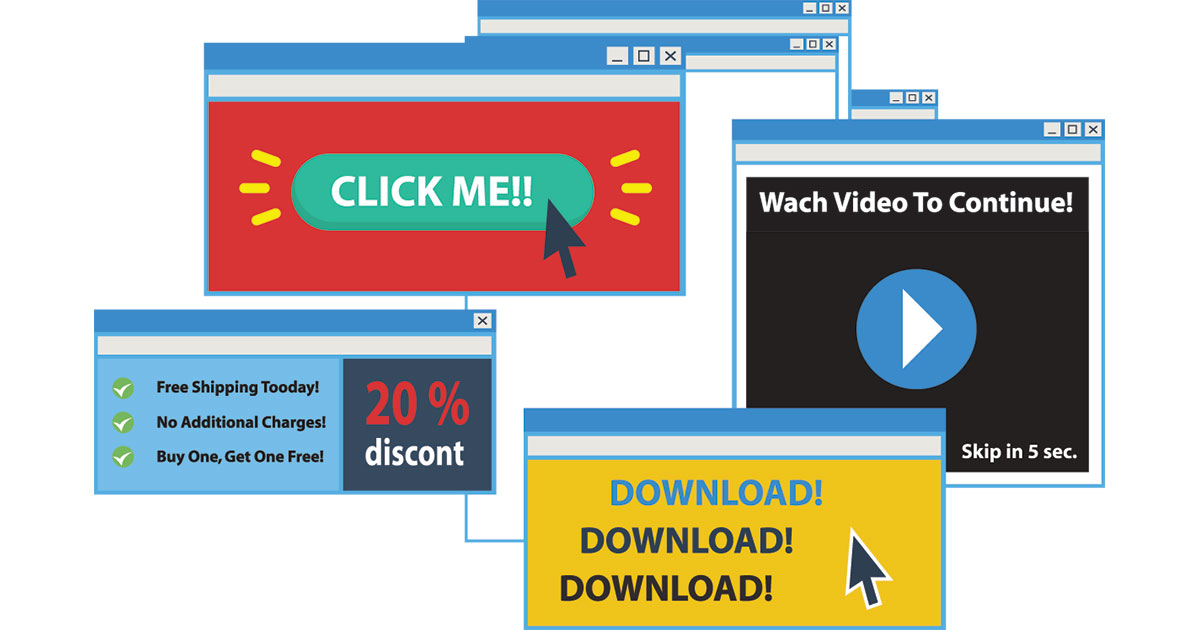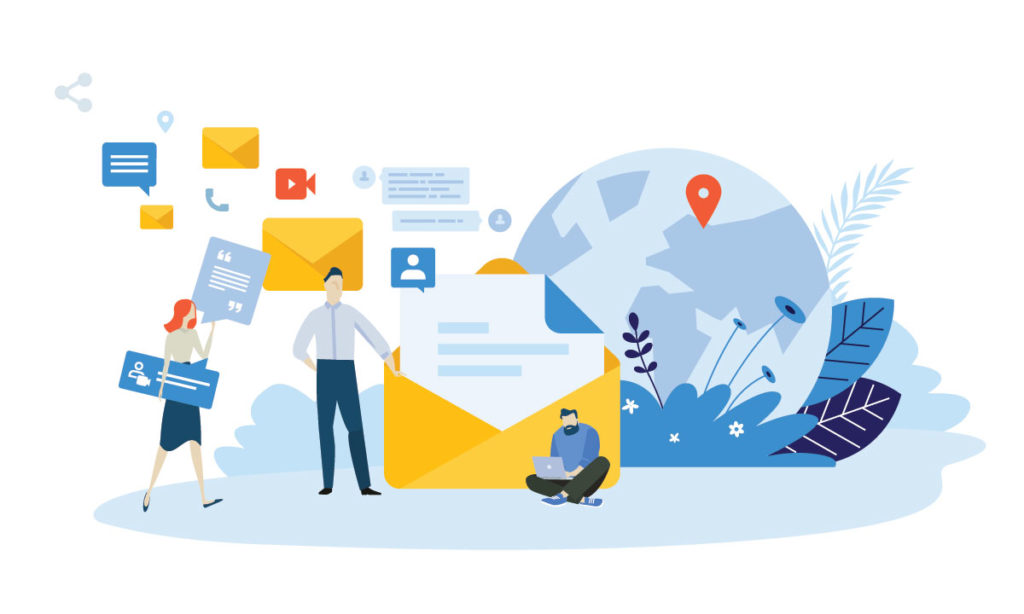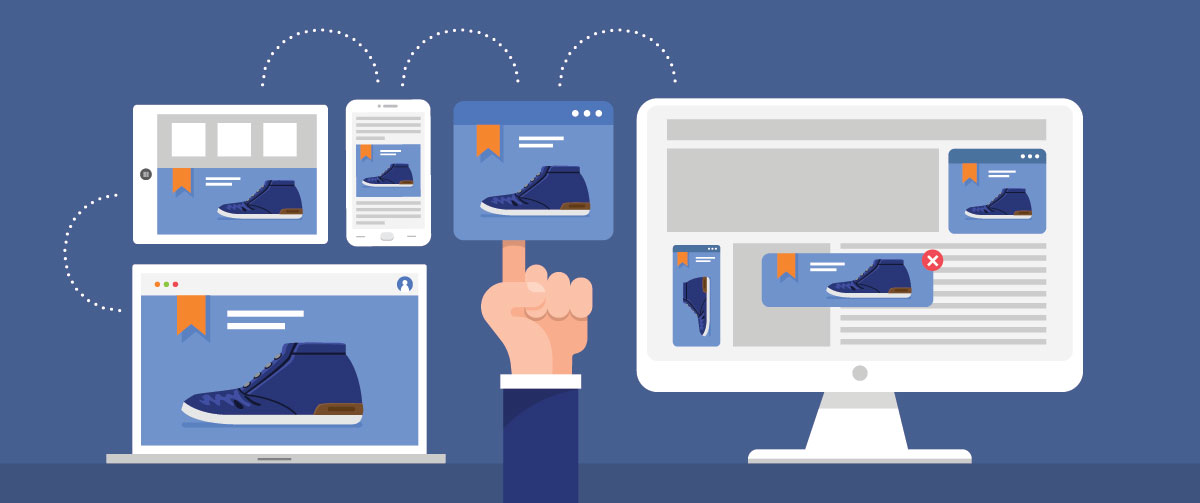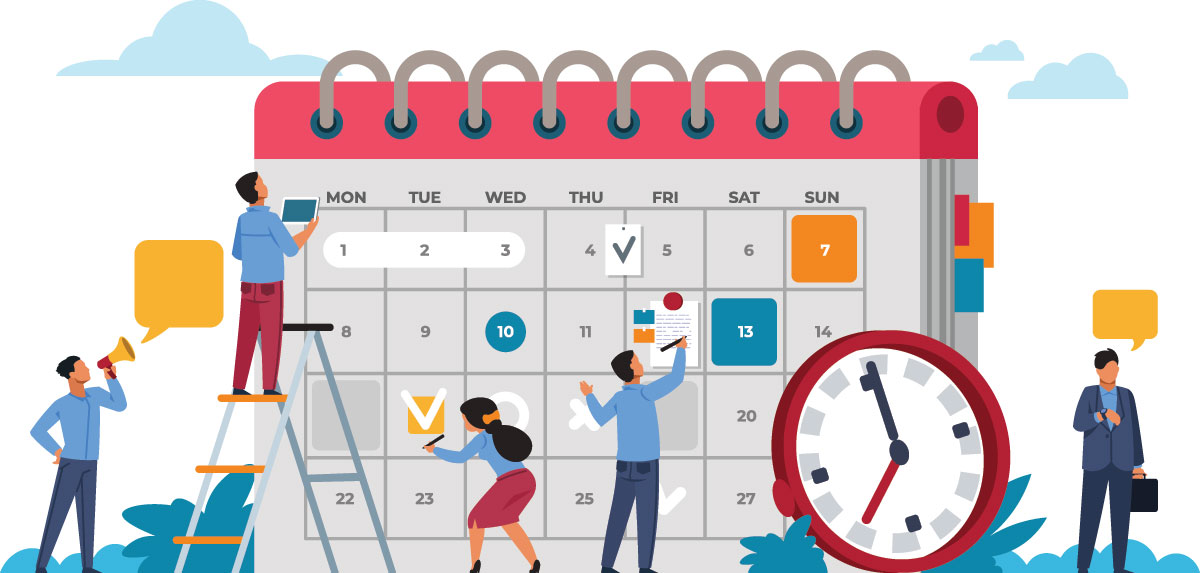It’s not surprising that the people who are most successful in business today are those with a strong online presence. The internet is where many of your customers live and work, so you want to make sure they can find you easily on their favorite search engine.
Your company website is your window to the world. It’s where potential clients can get a feel for what you offer and how much it costs, but it also has the power to help generate revenue in ways that are less obvious.
Here are ten tips to help you optimize your site so you can earn more money with less work.

Improve the Load Time of Your Website
Google is taking a big step in fighting slow websites. First, they will only display a portion of a website’s results if it loads too slowly. Second, Google favors sites that are quick to load when displaying search results. If you want to improve your site’s speed, there are two ways to get help. First, you can use Google’s PageSpeed Insights tool to get your current speed score and suggestions for how to improve it. The higher the score, the better your site is in terms of load time. The higher quality sites tend to have faster load times than the lower quality sites.
Try using a website that audits the load time of your site. This is done by opening one link from your site in a new window and then timing how long it takes for all of the assets to download. This gives a complete picture of your site’s speed, which includes server performance, internet connection speeds, and so much more. If your site’s load time is high, this gives you a good idea of what to work on first.
When loading a website, users want it to be quick and easy. No one likes waiting for a webpage to load when there is nothing interesting on it yet. The best practice for increasing the speed of your site is to download all content on the site progressively. This means that everything loads in small pieces, rather than all at once. This reduces the total amount of data needing to be transferred and therefore speeds up page loading times. The best way to approach this method is by using an asynchronous script tag. This allows you to load all of the content progressively while running in parallel. This way, each piece is retrieved independently and then combined into the final page design once it has completed loading.
By using async tags, you allow your site’s users to start enjoying your content as soon as possible. No one likes waiting for a page to load, so do whatever you can to improve this aspect of your site.
Improve Your Site's Speed in General
There are many factors that contribute to your site’s load time. You want to remove any clutter or unnecessary items on the page that do not help the end user accomplish their goals. It is important to use an efficient platform for your site. The most widely used platforms (WordPress, Drupal, etc.) have several plugins that can help you improve your site’s speed.
You also want to make sure that your web hosting server is up to date and running efficiently. Websites with lots of images and videos tend to load slower than sites without these items; optimize your images before uploading them if necessary. Reduce the load time of your site by compressing CSS and JavaScript files.
Here are a few things you can do that may improve your website’s overall speed.
- Reduce the number of HTTP requests that your website sends to the server
- Space out and compress Stylesheet and JavaScript files properly to reduce HTTP requests
- Use WordPress plugins to improve speed (ex: WP Super Cache, W3 Total Cache)
- Remove clutter from your site to improve speed (text formatting, unnecessary images, videos, etc.)
- Optimize all images before uploading them to your website
- Make sure that your hosting server is up to date and efficient

Add Pop-Ups
Pop-ups may seem completely out of place on websites, but they are actually one of the top ways to increase your website’s revenue. The pop-up may be annoying, but it is more effective than banner ads at increasing your conversion rate or opt-ins. Once you launch a site, run A/B tests with different pop-ups to see which one performs best. You can also advertise your website on another site (such as YouTube) in order to test the efficacy of different pop-up ads. If you are not sure what type of offer will work, use an affiliate link or create a lead magnet through Clickbank or Amazon Associates in order to do product testing.
Once you have found a high-performing product, use it in an exclusive offer in order to gather email addresses. You can also sell your visitors products through Clickbank or Amazon if they make a purchase within a certain amount of time. This is effective because you can advertise directly to people who are already interested in purchasing your product.
Starting a blog and posting on social media is not enough to get people to your website. You need a unique strategy in order to increase your visitor count and garner more conversions. New customers will only come if they see the ads or pop-up, so it is important that you test different offers until you find the one that works best for your business.

Generate Traffic via Email Marketing
Email is one of the best ways to generate targeted traffic from an existing list of prospects or customers. You can send both promotional emails about new products or service launches, as well as informational content, such as blog posts or videos.
Emails are the easiest way to let your audience know about discounts, sales, and other time-sensitive offers. They also allow you to be a resource for your customers in a way that’s not intrusive.
Your list of contacts can be used to create newsletters, which provide regular updates on your company and industry news. Newsletters are ideal for small business owners who have limited funds but still want to maintain a steady flow of traffic coming through their website.
Marketing automation tools let you easily track who has read your emails or clicked on any links, so you can tailor future offers to their interests and buying behavior.
Email marketing allows you to generate traffic and build and maintain relationships with customers and prospects. It’s a cost-effective option for small businesses that have limited resources.

Use Retargeting Ads
Retargeting means that you are following your visitors all around the web, showing them banner ads or pop-ups wherever they go. You can do this through Google Adwords, Facebook Ads, LinkedIn, etc., so it may seem like you are getting annoying; however, the ads are targeted in such a way that your potential customers start to feel like they are receiving personalized attention. Once the retargeted person finally makes a purchase, you can stop showing them ads (via remarketing lists).
Retargeting ads are simple to set up, but the best way is to hire an expert who can help you come up with a strategy. That way, your money will be well spent! Just make sure you are getting the right advice. It might also be helpful to look into retargeting analytics.
Make sure to sign up with Google Analytics or at least install the UA-plugin, because this information will be valuable when optimizing your ads.
Benefits of Using Retargeting
Retargeting will help you increase sales and conversion rates because potential customers will be tempted to return to your site more often after seeing you everywhere they go. Such is the power of retargeting! Conversion rates can triple when running retargeting campaigns (some even say that’s an understatement). Retargeting ads are also very precise because you can target specific demographics for better results.
Make sure to keep track of all your data, so that you know where your visitors come from and which ads work the best! This is very important when optimizing your campaigns. Use tools like Google Analytics UTM codes to help categorize your visitors and see how they convert in the end.

Add Email Signup Forms
Putting an email signup form on your website is the easiest way to start building an email list; otherwise, you need to go through a third party like Mailchimp or Aweber. If you struggle with coming up with good copy for your signup forms, use examples of other forms for inspiration (for example, if you are selling running shoes, look at fitness websites such as Nike, Adidas, etc., for ideas).
Also, remember to add a clear call to action, such as “Sign up for the newsletter,” and make sure your button copy doesn’t sound like it’s mandatory.
Once you have your email signup form in place, make sure to monitor your conversion rate and optimize your forms periodically for better conversion rates. For example, test out different headlines to see what gets more people to subscribe. Once you start growing a healthy list of subscribers, think of ways that you can build a relationship with your email subscribers through a regular newsletter. Some ways to do this are by conducting surveys, asking for feedback on new products or services, and inviting them to some sort of event.
The more value you provide to your list members, the more likely they will be willing to buy from you as well as share your offers. If you keep this in mind, you will be able to build a solid email list that will help you grow your business.

Improve Your Site's Storytelling
Storytelling is one of the oldest forms of communication and marketing. People love stories that entertain and emotionally engage them. You can amplify this power by creating reviews and articles related to your business and brand. For example, if you are selling running shoes, create articles about famous marathoners of the past and how their success relates to your products.
One way to improve the storytelling of your business is to create a blog or website specifically about each product, service, or brand you offer. This will help customers easily find information and spark their imaginations about how your products might be able to help them. For example, if you are selling a new line of running shoes, have a specific news page about all the new technologies that make them more efficient and comfortable.
Another way to improve your storytelling is to create stories that help you sell one product or service by offering something else with it. For example, if you are selling running shoes you might offer customers a free music download (or any other type of bribe) when they buy two pairs of shoes. This will help customers rationalize purchasing your product and the additional item by thinking they are getting a great deal on both.
Another way to improve storytelling is to focus on customers that have already bought your brand’s products or services before. For example, if you have a website but no real social presence, create a Facebook page about the brand’s history and offer weekly drawings for free products or other incentives. This will help you establish a loyal fanbase that will be more likely to buy your product or service in the future.
There are many ways you can improve storytelling on your website. The most important thing is to focus on customers and how they can get more benefits from buying your product or service. With these tips in mind, you will be able to create great content that engages visitors and helps turn them into paying customers.

Make a List of Marketing Tactics
Now that you know what types of marketing techniques work best for your business, start creating a list with a brief description of each tactic. For example, product reviews could include “List of 30 Most Popular Running Shoes Reviewed” or “List of 5 best marathon trainers under $100”; free giveaways could include “Free Beginner’s Guide to Marathon Training”; retargeting ads could include “How To Increase Your Website Traffic With Facebook Ads”.
A list of marketing tactics is a key tool for any business owner to use in their marketing plans. Creating an effective list will allow you to maximize your time and money, as well as reach your target audience effectively.
Every company has different needs, so there is no one-size-fits-all list of strategies that will work for every business. To make the most effective list, you’ll first need to understand your business and what it needs from its marketing efforts. The first step is defining your target audience; this will allow you to develop a more focused and successful list of strategies.
Once you know who you’re targeting and what they want, the next step is to brainstorm some marketing concepts. Marketing works best when you give your target audience exactly what they want, so providing them with a list of things they’ll receive is an effective way to advertise.

Track and Understand Your Marketing
Google Analytics is a great tool that lets you track all of your marketing campaigns in one place. You can measure traffic, locations, sources (organic, paid), devices (desktop vs. tablet vs. mobile), conversion rates by source or location, etc. Tracking the performance of different marketing techniques is essential to determine what works best for your business and which ones are less effective, so you can do more of the former and less of the latter.
Another important thing to watch is your conversions. Is one source converting better than another? Where are people dropping off in the checkout process? What is a high bounce rate for a specific page on your site? These analytics let you know what’s going well and what isn’t so you can continue with what works and fix or remove what doesn’t.
Marketing analytics can tell you a lot about your audience and how they interact with your website, but sometimes it’s important to know what users are thinking when they’re not actively on your site. That’s where social media comes in. Social media is a great way to get instant feedback from the people who see your content, whether or not they end up on your site. You can see what is engaging users and what isn’t, helping you improve the quality of your content.
When making changes to these metrics, it’s important to be consistent. For example, if you’re seeing that people are abandoning the checkout process at a specific page or stage, make note of which pages these users were visiting before that point to see if there’s anything you can do to make it easier for them. If a source is converting better than another, make sure your budget isn’t skewing the numbers. Once you’ve made a change, be consistent with it and keep track of how things are going after a few weeks or months. It may be a new marketing technique, or maybe it’s just taking some time.
Tracking and understanding your marketing isn’t difficult once you know what you’re looking for and how to interpret the data. But knowing what questions to ask and making changes as needed is the important first step before any of that can happen. By using Google Analytics and social media to track your metrics, you’ll be able to improve your marketing campaign results.

Map Out Your Business's Marketing Calendar
This is where you translate your list of marketing tactics into an easy-to-follow plan for the year. If you are not sure which campaigns to run in what order, use Excel or Google Sheets to make a chart with rows for each month and columns for the marketing tactics.
For example, you might want to start by sending an email newsletter or creating blog content in April, then run product reviews or giveaways in May, do some retargeting ads during the summer months (when people are less likely to buy), etc.
This marketing calendar is your master plan for the year. You can refer to it during planning meetings, use it as a basis for conversations with your manager or clients, and share it with everyone on your team.
In Conclusion
If you want to learn how to effectively market your product or service, it’s important that you understand the different stages of a customer’s purchasing process and lead funnels. The tips we’ve provided should help you to get started thinking about how you can leverage your own digital marketing strategy.
Which of these tips has helped increase your conversions? Let us know! We’re eager for feedback on what strategies work best.
If all of this sounds intimidating and you want help enacting these principles, let us know. Our team is ready to partner with you to create an SEO or marketing plan that drives sales by considering how your customers think.















